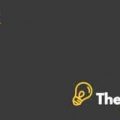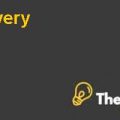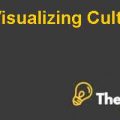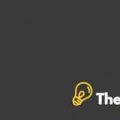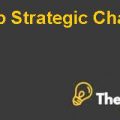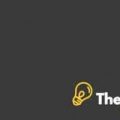
Employee Involvement & Engagement
Organization is an organized group of people who work together towards a common goal. This group is comprised of people who are an organization’s core assets known as personnel. This group serves as a ladder for the organization to move forward by busting their rears to exceed the organization’s expectations. But all of this is not achievable with a glimpse of an eye. Organizational core assets need to be reinforced and their interest needs to get aligned with that of the strategic goals of the organization itself. If the human resource of an organization is potent and competent enough to match the desired performance with that of the actual performance then no force can stop the organization from achieving its full potential.
When the case of an organization comes, then it follows to an organizational human resource that is a combination of people with different sets of mind. Some of them are loyal to the organization whereas other are termed as jerks (Sutton, 2007). It is said that organizational jerks damage the organization’s reputation and hurt investor’s confidence. They not only hurt the internal intangible assets of the organization but also hinder recruitment and employee retention. According to a study, an organization must not focus on blind copying, politics, parochialism, silos and games but embrace an environment that is reflective of collaboration amongst the employees and which helps the employees to work in a collaborative, egalitarian and meritocratic fashion (Sutton, 2007).
If the human resource department fells short sighted of these jerks, then they can have a negative impact on the churn levels. They deteriorate echelon of creativity and innovation in their group that ultimately have a trickledown effect on the whole of the organization’s personnel. These organizational jerks impair or dysfunctions cooperation amongst the employees and the top management, hence, leaving room for further disputes to arise whether intentionally or unintentionally. These disputes give rise to the employee repent and a gut for being unsecured (Sutton, 2007).
Sutton R. raised concerns for these jerks and the total cost associated to them if they remain in the organization, abbreviated as TCJ (Sutton, 2007). Therefore, organizations should implement a no jerk rule. The silent threatening messages from the immediate supervisor and other demeaning acts by the reporting authority, such as ridiculing the employee, scolding and harassing the employee and other harsh silent treatments give rise to the dirty dozen (Sutton, 2007). The exhibit in appendix is representative of the dirty dozen list which de-motivates employees from working in the organization and directly or indirectly impacts employee engagement and employee involvement.
However, to implement the no jerk rule practice the organization needs to communicate the rule publicly amongst employees, weave the no jerk rule into recruitment and suspension policies, teach the existing employees about how to fight with the jerks through the whistle blowing technique and make the rule applicable to the clientele (Sutton, 2007).
In addition to this, employees need to have a road map to the processes that instill in them that they have to work for the organization, which will help them achieve their personal goals too (Boswell, Bingham, & Colvin, 2006). The human capital needs to be managed effectively along with subtle controls that do not hinder their creativity or make them feel less autonomous. Employee morale is the most important thing that needs to be assessed on a regular basis in order to upgrade the employee satisfaction levels. This is because if the organization possesses a contented and happy work force; then employee productivity gets enhanced. The human capital can give such valuable insights to the organization’s inabilities that the organization can’t achieve even when the research is outsourced.
Therefore, it is very important for the organization to have a two way communication with the employees by giving them chance to raise their voice and them solving their problems so that they feel they are been taken care off. When the employees are satisfied, they help the organization in achieving its full potential and ultimately in the transition of the organization’s strategic goals into hard numbers (Boswell, Bingham, & Colvin, 2006). Then the line of sight needs to be changed through by aligning an organization and employee interests. The line of sight directs an employee’s effort in the way that is beneficial for the organization and helps them mitigate risk at a greater height (Boswell, Bingham, & Colvin, 2006).
Nevertheless, human capital is the core asset of the modern business. Therefore, they need to be given such autonomy and empowerment so that they take responsibility of the work done and gear their efforts towards organizational goals in the fashion that they feel optimal. The ancient model of the architecture of citizenship states that businesses should employ the Athenian .............................
This is just a sample partial case solution. Please place the order on the website to order your own originally done case solution.


